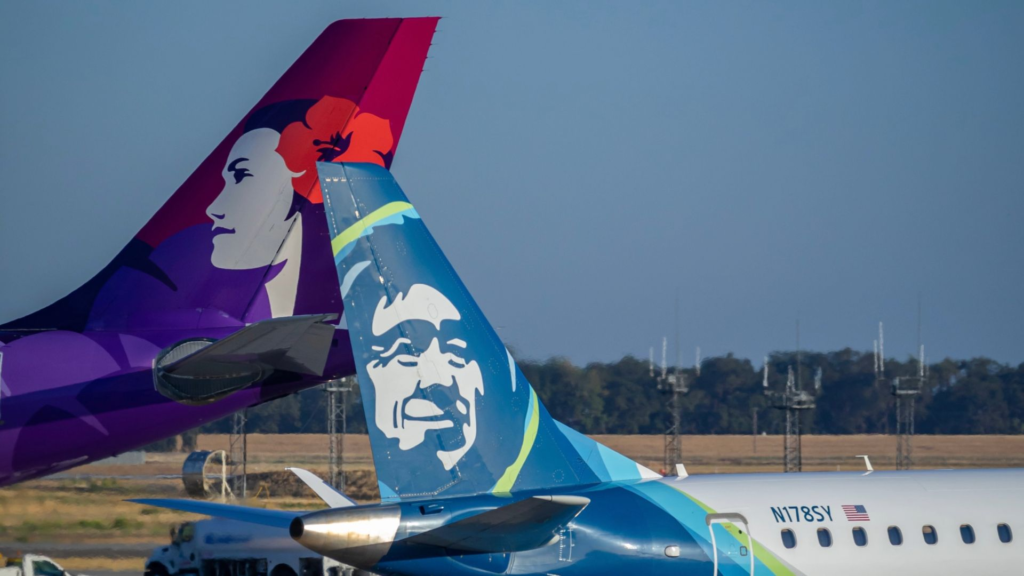It has been exactly one year since Alaska Air Group completed its $1.9 billion acquisition of Hawaiian Airlines. The deal was first announced in 2023 and came at a time when Hawaiian was struggling financially. The carrier had faced multiple setbacks, including the impact of the Maui wildfires, stronger competition from Southwest Airlines on interisland and mainland routes, and a slower rebound in Asia-Pacific demand after the pandemic.
While Alaska and most US carriers had returned to firmer financial ground, Hawaiian continued to post losses in nearly every quarter since 2020. Alaska saw the merger as a timely opportunity to expand its West Coast presence and gain a foothold in long-haul flying. At the time, CFO Shane Tackett described Hawaiian’s valuation as “a unique opportunity in time,” with the potential to create a stronger market position (especially in the premium segment). One year later, the question is whether the strategy is delivering as planned.
The Group Has Seen Some Financial Gains In The First Year
Indeed, there have already been some notable improvements in the first year of integration. During Alaska Air Group’s most recent earnings call, executives confirmed that Hawaiian’s operations posted a quarterly profit for the first time since 2019. That marks an important milestone for the combined company, given that Hawaiian has consistently posted losses in recent years. For the second quarter ending June 30, Alaska Air Group reported a net income of $172 million, compared to $220 million the year earlier, when Hawaiian’s results were not yet included.
Notably, the Honolulu-based airline’s adjusted pretax margin improved by 11 percentage points year-over-year, showing the first signs of financial recovery under Alaska’s ownership. As reported by West Hawaii Today, Ryan St. John, Alaska Air Group’s Vice President of Finance, Planning and Investor Relations, said, “The Hawaiian aircraft assets, as we are calling them, were profitable for the first quarter really since 2019… if you can get a profit margin between 5% and 10% that’s pretty darn good for this industry.”
In addition, Alaska also saw improvements in its revenues. The airline’s premium revenue increased by 5% year-over-year, which was primarily driven by the redeployment of Hawaiian’s widebodies on longer flights. St. John noted that customers are far more likely to pay for first-class or extra-legroom products on extended routes, and the Hawaiian assets have significantly strengthened Alaska’s ability to capture that demand.
Hawaiian’s Widebodies Have Allowed Alaska To Expand Into Key Long-Haul Markets
But the most significant benefit Alaska has gained from the merger is access to widebody aircraft. The airline has historically relied on its Boeing 737 fleet, which has been effective for domestic and short-haul international routes but unsuitable for long-haul operations. With the merger, Alaska inherited Hawaiian’s fleet of 24 Airbus A330-200s and four Boeing 787-9s, giving it more capacity and range to compete on global routes.
As a result, the carrier has moved quickly to expand into key international markets from its
Besides, the merger has added nine outstanding orders for 787-9s (of which, the group has converted five to the larger 787-10), which will feature Alaska Airlines’ livery and interiors. While this year’s new transpacific services are operated under Hawaiian branding, the upcoming European flights will mark Alaska’s first widebody services under its own brand. These will include updated cabins designed to attract premium passengers and will support the airline’s efforts to drive more high-margin revenue.
The Merger Has Positioned The Airlines More Strongly Against Competitors
Furthermore, the merger has strengthened Alaska’s competitive position, especially against
Even across the West Coast, the Alaska-Hawaiian deal has given the group a stronger role against Delta, United Airlines, American Airlines, and Southwest by linking Hawaii to more mainland destinations. While Alaska’s market share is still much smaller than that of the four airlines, the deal has indeed expanded its reach and made it more competitive.
Both carriers are now working to secure a single operating certificate from the Federal Aviation Administration, which is expected in October. This will bring Hawaiian fully under Alaska’s operating structure and mark another step forward in the integration process.


